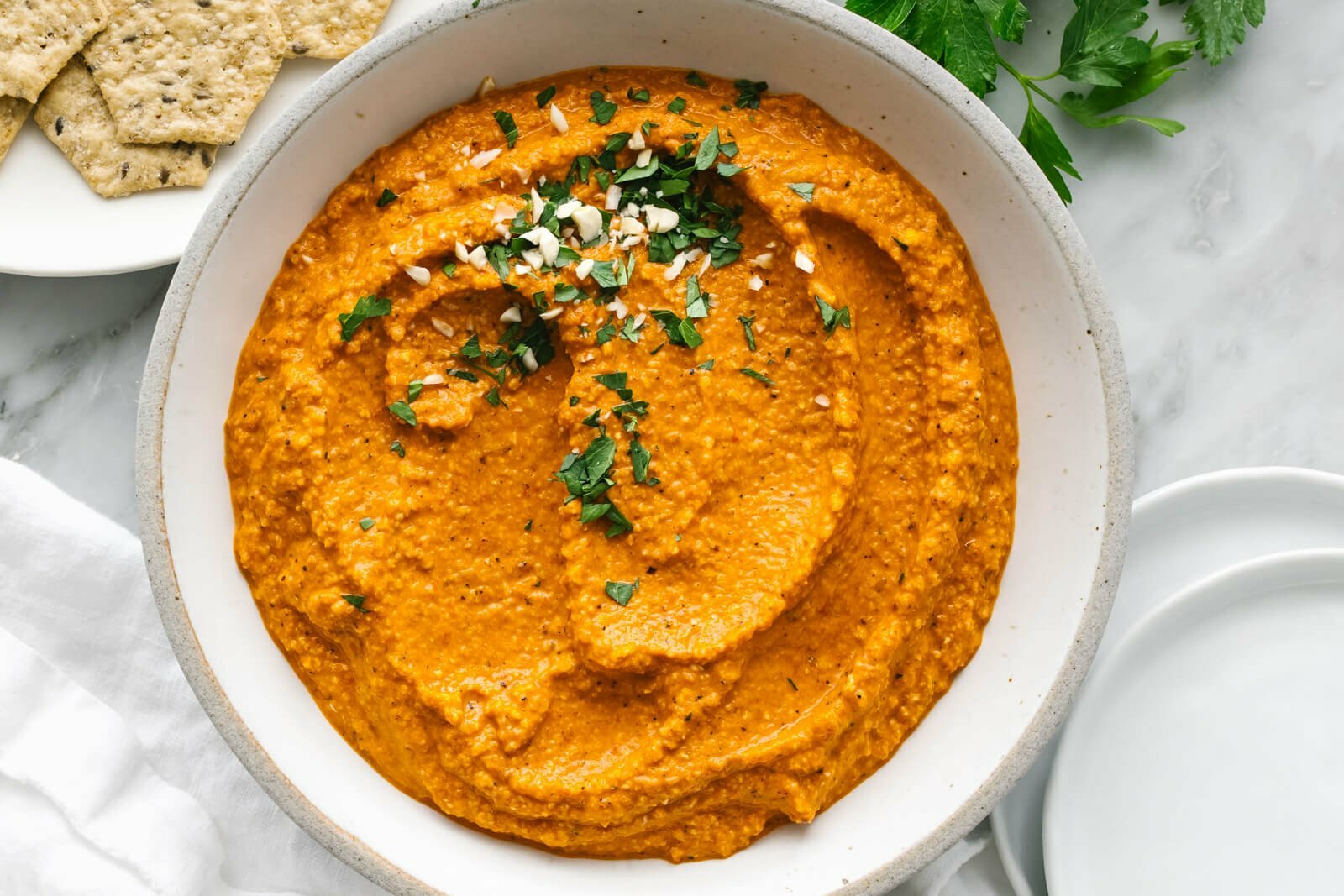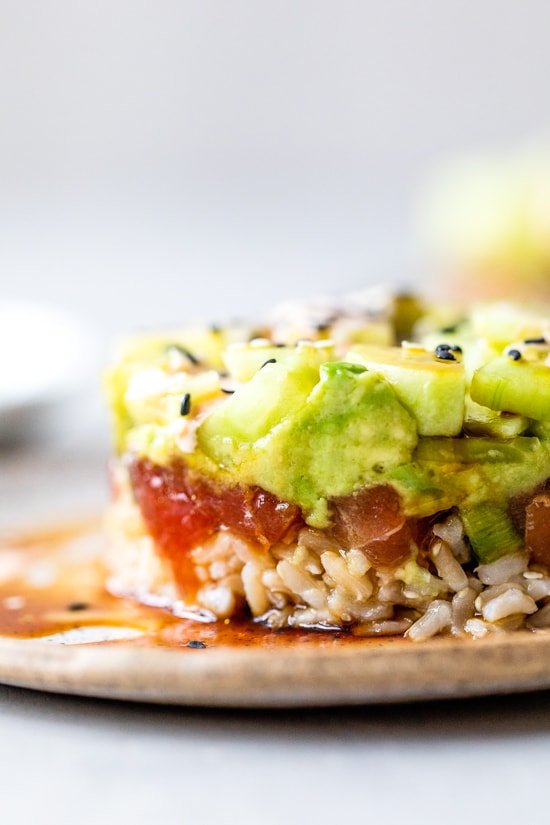Romesco Sauce
Romesco sauce is a thick Spanish sauce of charred tomatoes, roasted red peppers, toasted nuts, and garlic that adds a deliciously smoky flavor to all types of meals. Dip into it, spread it, cook with it – you name it!
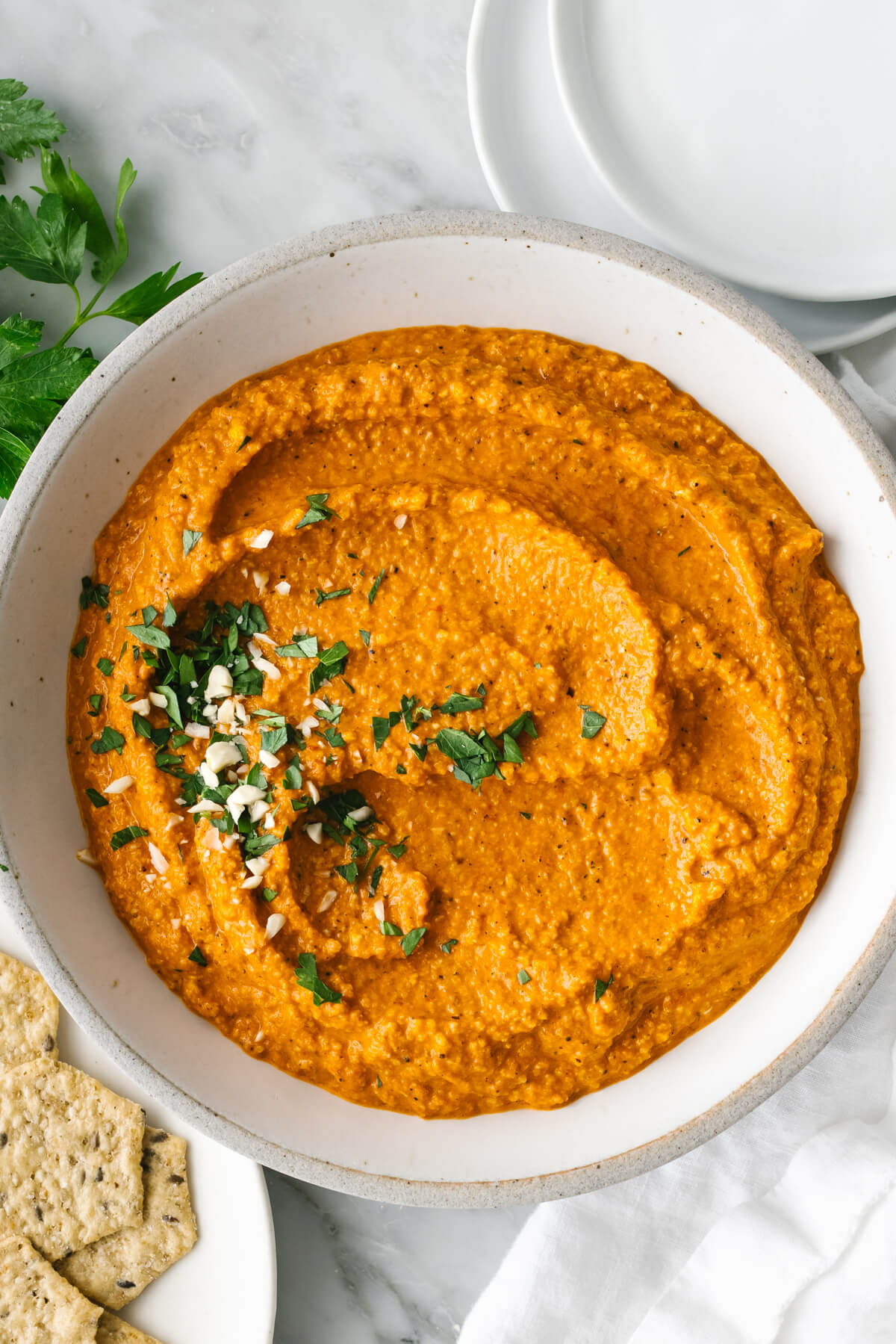
What Is Romesco sauce?
If you’ve never had romesco sauce before you’re in for a treat. Just think of it as a Spanish version of pesto (in terms of texture and use) that’s incredibly rich, smoky, and blended into a smooth yet slightly chunky consistency. It’s such a versatile ingredient in Spanish cooking, and more specifically, Catalonian cooking.
But, I always want to emphasize that there can be a few variations to a “traditional or authentic” recipe. Some may use pine nuts, crusted bread (if you’re not gluten-free), or off-the-vine-tomatoes. But the heart of this sauce is a combination of roasted tomatoes, roasted red peppers, nuts, paprika, garlic, and few other pantry staples.
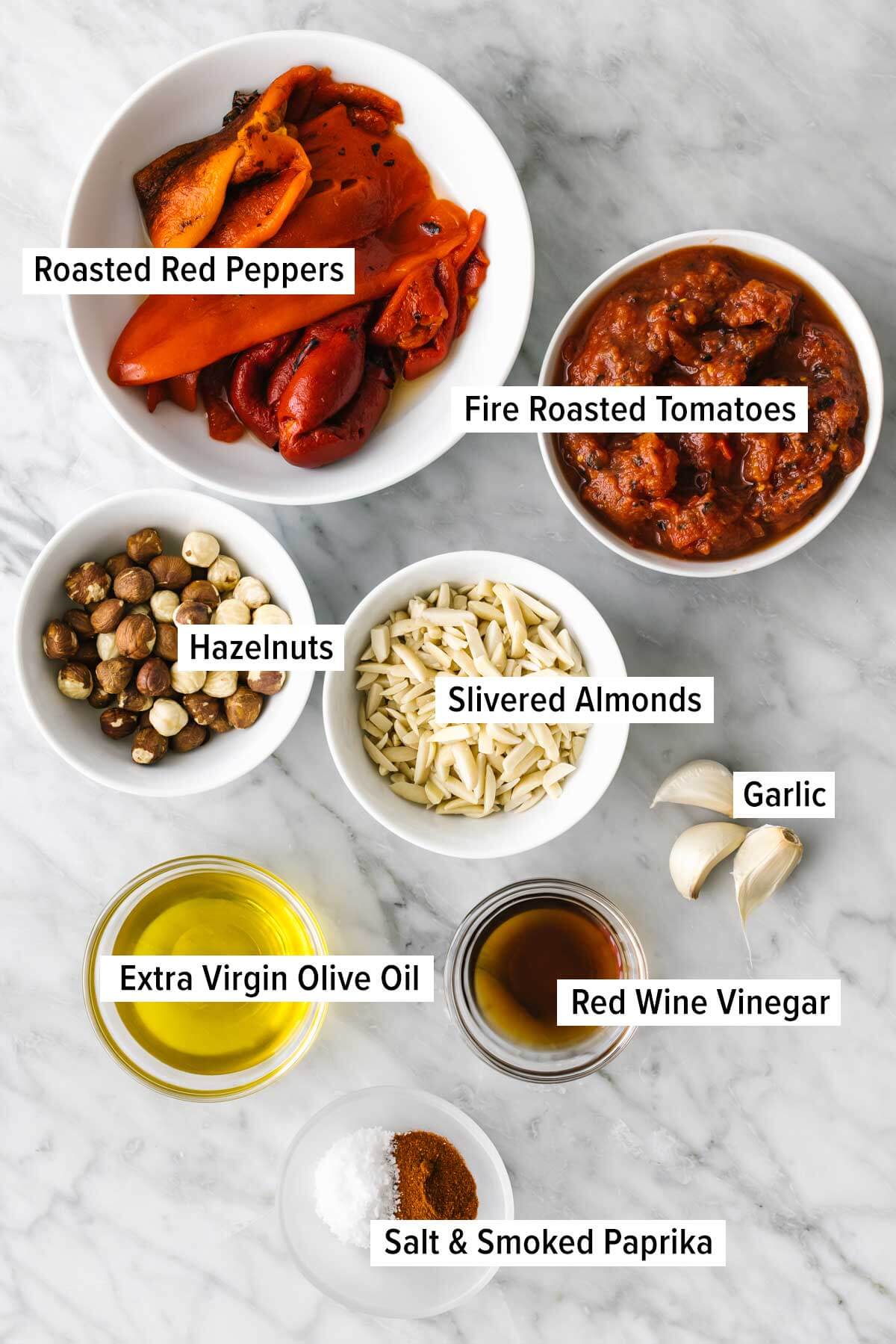
Romesco Sauce Ingredients
Like most sauces, they’re best homemade. And this one is made super easy with just a handful of pantry staples. Here’s what you’ll need.
- Hazelnuts: Hazelnuts can be optional, but more traditional romesco recipes include it for its deliciously nutty flavor.
- Slivered Almonds: I’m using slivered almonds as they already have the skins off. But you can also use blanched almonds.
- Fire Roasted Tomatoes: Grab a can of fire-roasted tomatoes. Trust me, it will make all the difference in terms of flavor.
- Roasted Red Peppers: To keep the ingredients easy, I’m using jarred roasted red peppers. But if you have the time, roasting your own red peppers will be just as delicious!
- Seasonings: Smoked paprika, salt, and fresh garlic cloves adds the perfect amount of warmth and depth of flavor.
- Red Wine Vinegar: This is key for a little tanginess. If you don’t have red wine vinegar, you can also use sherry vinegar.
- Extra Virgin Olive Oil: A necessary ingredient to smooth out the sauce and provide a rich flavor.
Find the printable recipe with measurements below.
Let’s Make Spanish Romesco!
Typically, romesco sauce is made with a mortar and pestle. But let’s be real, that takes a lot of work. So, lets simplify the process by using a food processor or high-powered blender instead.
-
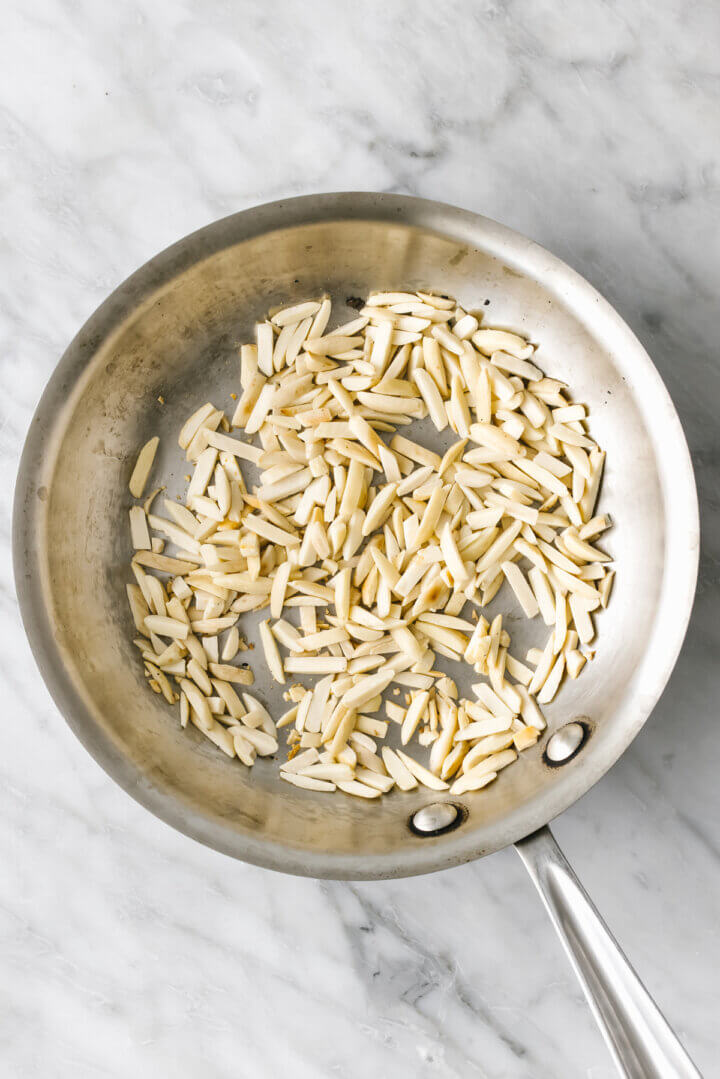
Toasted almonds are must for romesco -
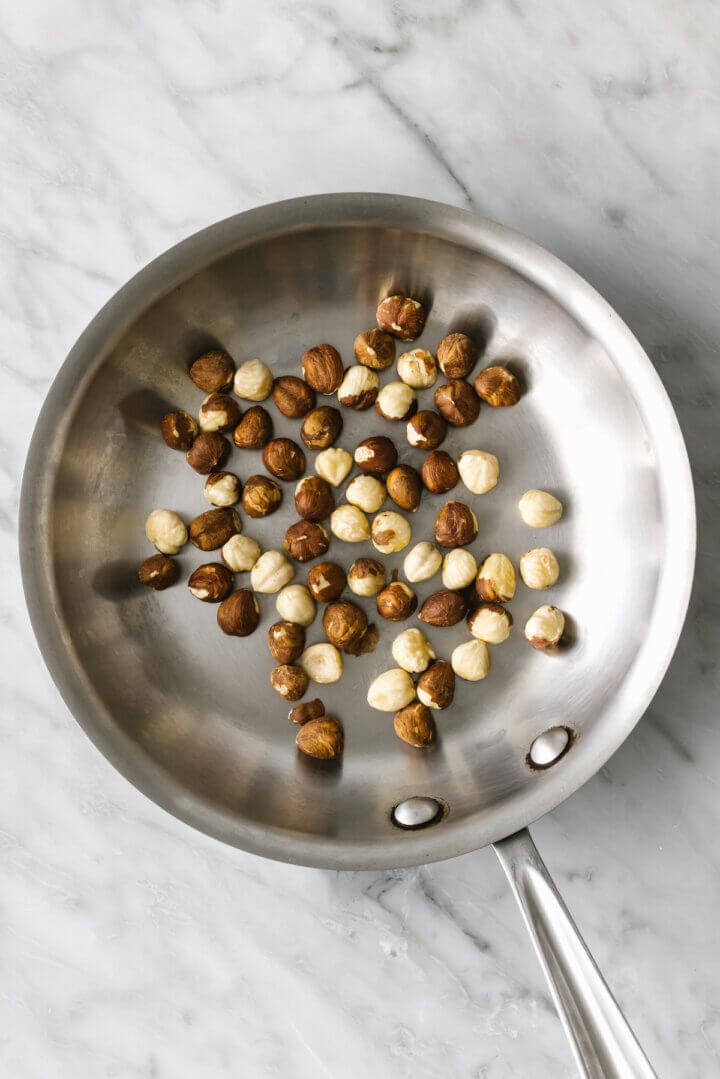
Along with toasted hazelnuts for a super nutty flavor!
- Toast the hazelnuts. Toss them to a pan over medium heat and toast for 5 to 8 minutes. Make sure to keep an eye on them as they can easily burn!
- Toast the almonds. Let the hazelnuts cool, then toast the almonds for 3 to 4 minutes until lightly golden.
- Remove the hazelnut skins. Once the hazelnuts are cool to the touch, use a kitchen towel to rub the skins off. Alternatively, you can rub them together with your hands.
- Blend away! Add the tomatoes, peppers, seasoning, and other ingredients to a food processor and blend until it’s thick and chunky.
-
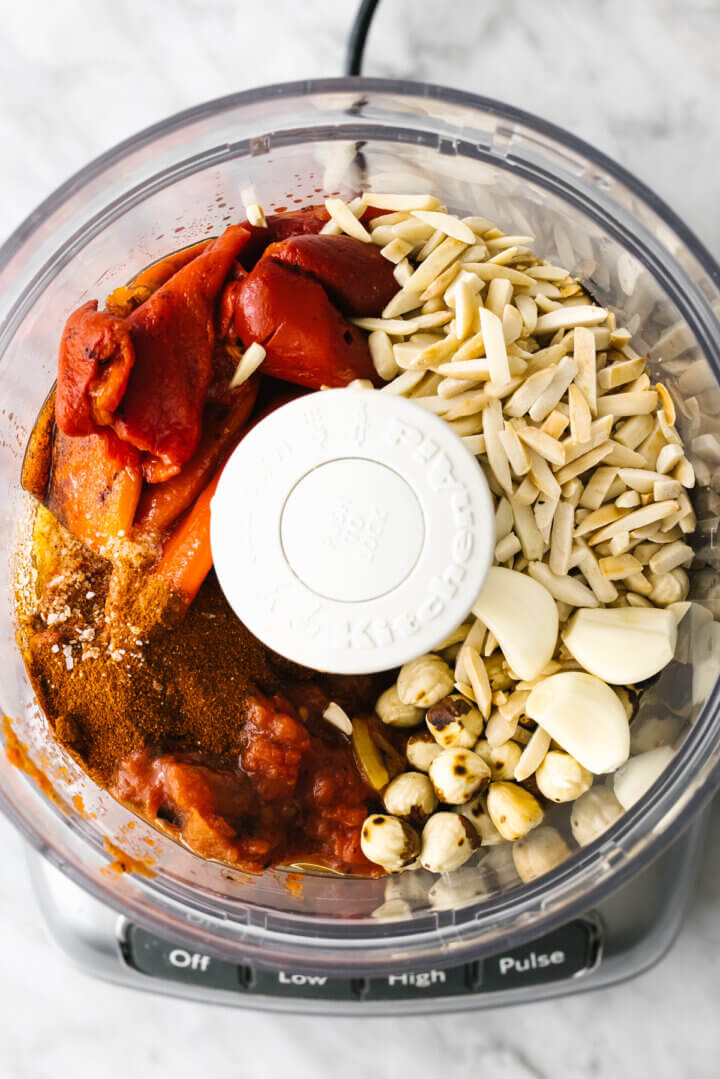
-
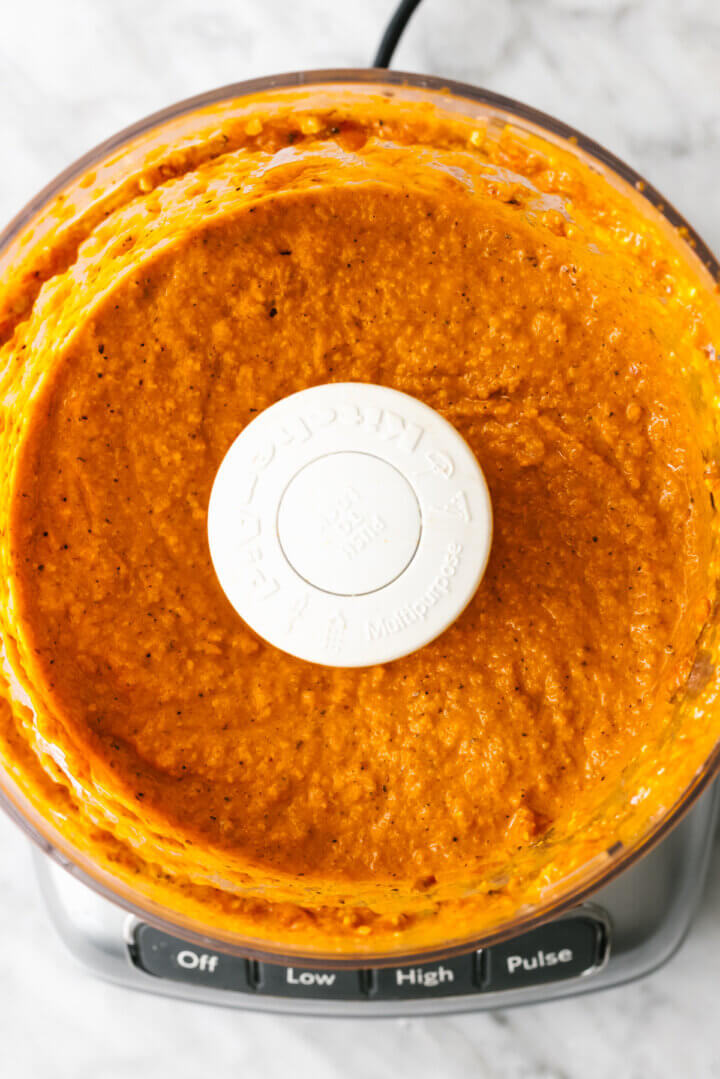
Blend until it’s smooth yet chunky
A Few Questions Answered
- Can I roast my own peppers instead? Absolutely! One can of jarred peppers is equivalent to about 2 red peppers. And if you need some guidance on roasting them, you can reference my roasted red pepper and tomato soup recipe.
- Is there a way to make this nut-free? While nuts are essential to a more traditional romesco, there’s still a way to make this sauce without it! Pepitas or pumpkin seeds are great substitutions.
- Can this be made into a creamier sauce? Romesco sauce is meant to be on the chunkier, grittier side. But you can use a blender, rather than a food processor, to blend until it’s perfectly smooth. Just note that you’d likely need to double the recipe so that you have enough ingredients to blend properly.
Delicious Ways To Use Romesco Sauce
After making a batch of this romesco sauce, I literally put it on everything and anything! Here’s a few ways to get creative with it.
- Serve as a smoky dip. If you’ve got guests coming over, this looks and tastes amazing as part of a crudité or any sort of appetizer platter.
- Cook it with meats and seafood. This is hands down one of the best sauces to coat pan seared fish (such as cod or salmon), pork chops, or chicken. Just cook your protein first, remove it, warm the sauce, then add the protein back in to let it simmer together.
- Use it as a soup thickener. If you’re making a creamy soup (especially tomato based ones), stir romesco sauce into the mix. It’ll make it extra creamy while adding an edge of smoky flavor.
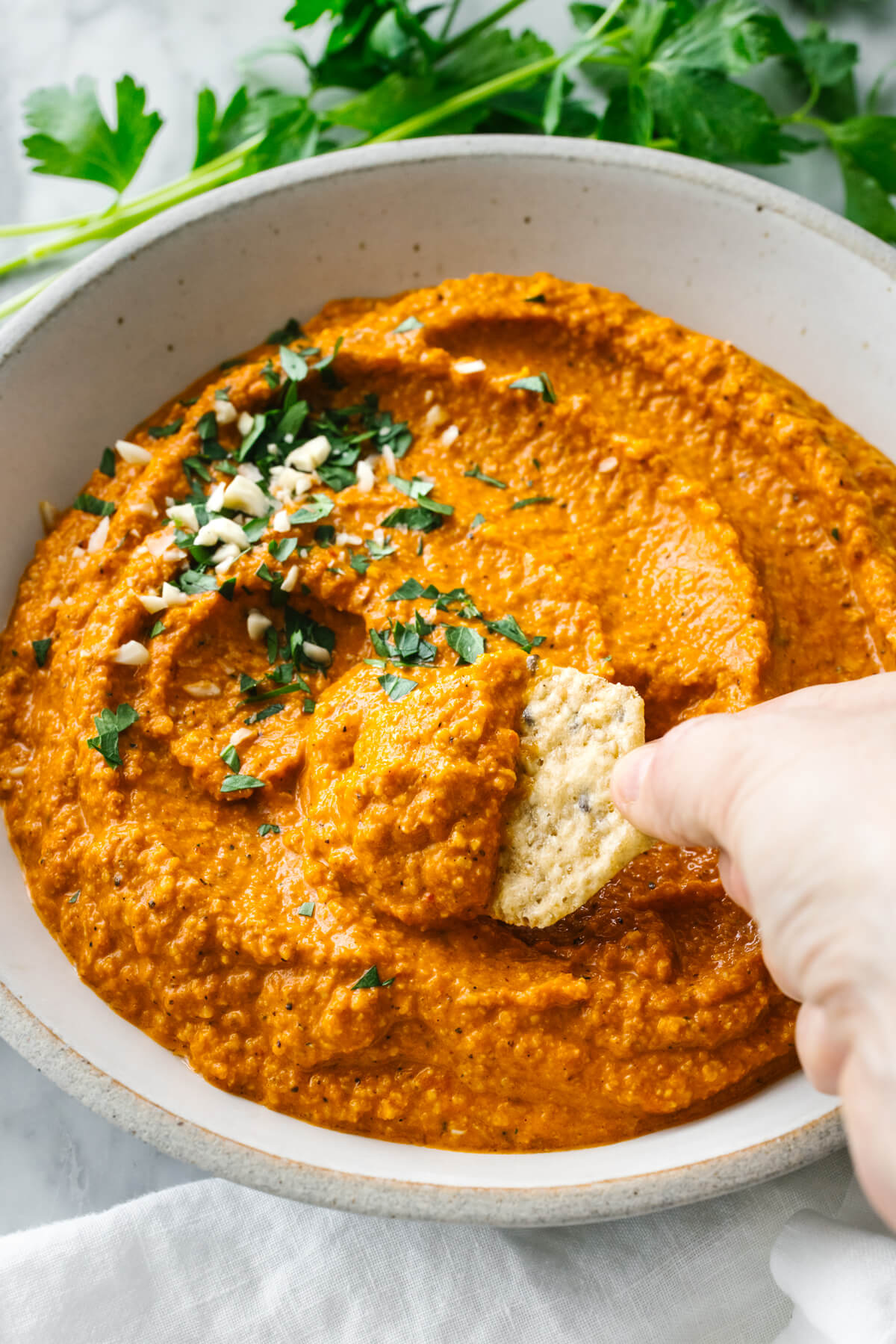
How To Store
Store the sauce in an airtight container in the fridge for up to two weeks. If you’ve still got tons leftover, freeze it for up to 3 months.
Pro tip: freeze small portions of the sauce in ice cube trays (or similar), so that you can easily defrost a small amount and top on meals as desired.
More Versatile Sauce Recipes
Looking for more ways to dress up a simple dinner? You’ll love these sauces that will take you from the Mediterranean coast to Mexico city.
If you make this romesco sauce, let me know how it turned out! I’d love to hear what you think in the comments below.

Romesco Sauce
Add a deliciously smoky, Spanish flair to all your meals with this Romesco sauce! It’s super creamy, perfectly chunky, and extremely versatile.
-
In a small pan over medium heat, toast the hazelnuts for 5 to 8 minutes, stirring occasionally. Then transfer them to a plate to cool.
-
While the hazelnuts are cooling, toast the almonds for 3 to 4 minutes in the same pan, stirring frequently, until lightly golden and fragrant. Once the hazelnuts are cool to the touch, rub them together with your hands or a kitchen towel to remove their skins.
-
In a high-powered blender or food processor, add the nuts, tomatoes, red peppers, garlic, vinegar, paprika, salt, and oil, and blend until smooth.
-
Garnish with chopped nuts, fresh parsley, and serve.
- I’m using slivered almonds as the skins have already been removed and they’re easy to find, but you can substitute with blanched almonds as well.
Calories: 179kcal, Carbohydrates: 6g, Protein: 5g, Fat: 16g, Saturated Fat: 1g, Polyunsaturated Fat: 3g, Monounsaturated Fat: 11g, Trans Fat: 1g, Sodium: 587mg, Potassium: 221mg, Fiber: 3g, Sugar: 1g, Vitamin A: 252IU, Vitamin C: 2mg, Calcium: 59mg, Iron: 1mg
©Downshiftology. Content and photographs are copyright protected. Sharing of this recipe is both encouraged and appreciated. Copying and/or pasting full recipes to any social media is strictly prohibited.
This article was originally published by downshiftology.com. Read the original article here.

